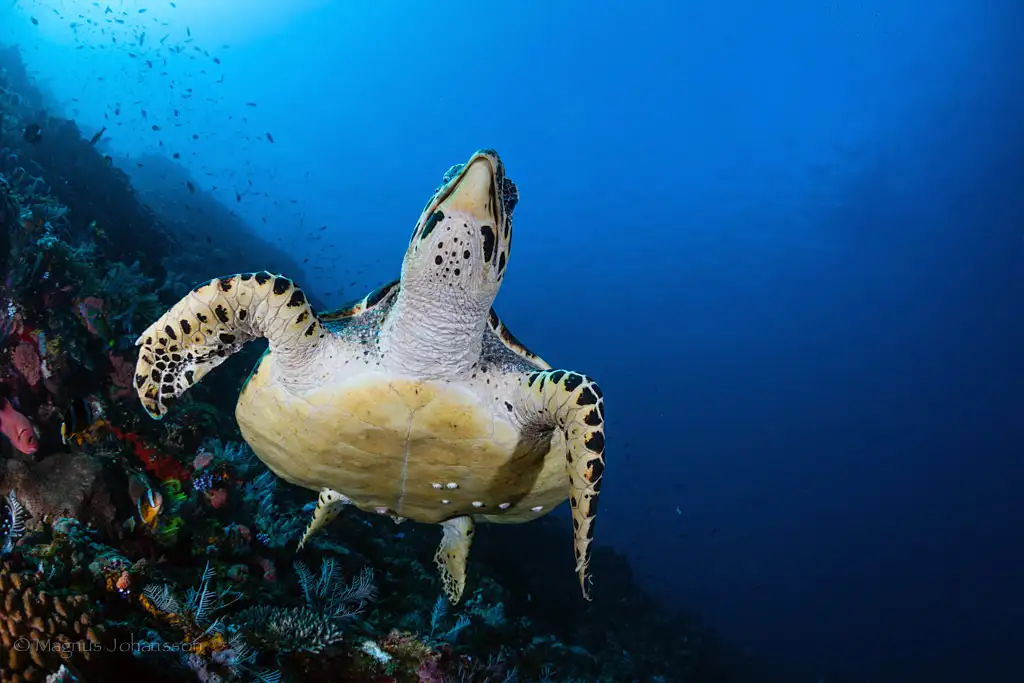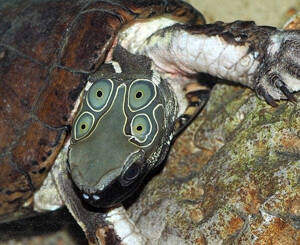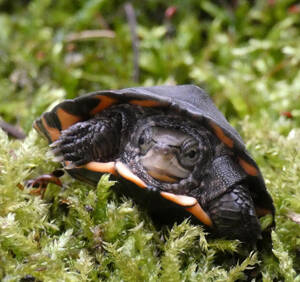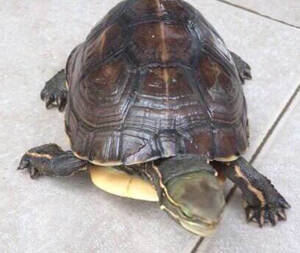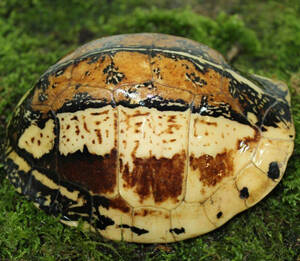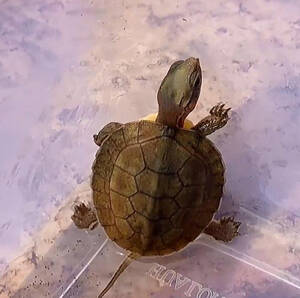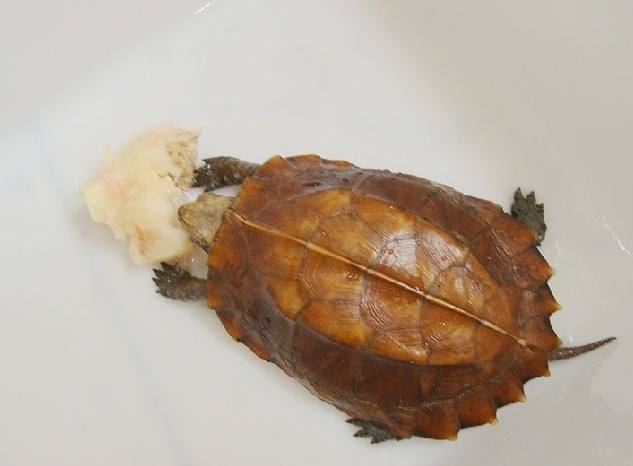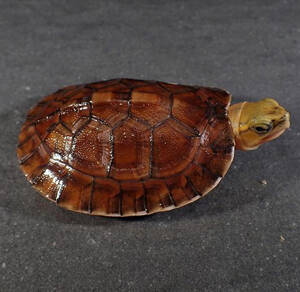Lepidochelys olivacea
IUCN
LCBasic Information
Scientific classification
- name:Lepidochelys olivacea
- Scientific Name:Lepidochelys olivacea,Olive Ridley, Pacific Ridley,Ridley du Pacifique, Tortue Bâtarde, Tortue Olivâtre, Tartaruga-comum, Tartaruga-oliva, Tartaruga-pequena,Tortue de Ridley,Tortuga Carpintera, Tortug
- Outline:Testudines
- Family:Testudinata Cheloniidae Olympia
Vital signs
- length:60-70cm
- Weight:About 12 kg
- lifetime:100years
Feature
The limbs are flat like paddles. The head, limbs and back of the body are dark olive green, and the plastron is light orange-yellow.
Distribution and Habitat
The global distribution is from 35°N to 30°S, and the domestic distribution is in the East China Sea and South China Sea.
They live in shallow tropical waters, mainly in tropical waters, and occasionally in temperate waters. They breed on coastal mudflats. They live in waters 80-110 meters deep.
Appearance
The back of the head has symmetrical large scales, the carapace is heart-shaped, and the rear edge of the carapace is serrated. The back of the head, the sides of the head, the carapace, and the back of the limbs are olive-colored, and the lower jaw, plastron, and abdomen of the limbs are light yellow, tending to milky white.
Details
The Olive Ridley is marine and little is known about its behavior other than its regular annual trips to nesting beaches. It feeds in the morning and basks on the surface in the afternoon. Large groups of turtles gather together to bask in the afternoon to escape the freezing temperatures of the water below them and maintain a warm internal body temperature with the help of the sun. In warmer areas where the water is shallow and warm, Olive Ridley are not usually observed spending time basking. The species will usually swim away or dive into deeper water rather than confront humans and other predators. On land, opossums, wild boars, and snakes will eat Olive Ridley eggs, and mature females will defend themselves on land by flapping their forelimbs.
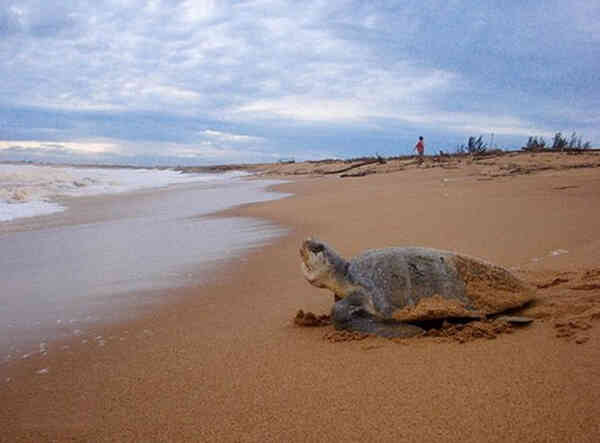
The Pacific turtle is a primarily carnivorous species that feeds on invertebrates and prochordates such as jellyfish, snails, shrimps, and crabs. They tend to eat a wide variety of foods, which has led to multiple attempts to ingest trash such as plastic bags and Styrofoam. In captivity, the species has been observed to cannibalize each other. Most feeding occurs in shallow, soft-bottom waters. In areas where there are no other food sources, they feed primarily on algae.
While the exact age at which reproduction occurs in the Olive Ridley turtle is unknown, females typically reach 60 cm in length before becoming reproductively active. The species is not monogamous. Mating typically occurs in early summer near the beach, with the male's sperm stored in the female's body for use throughout the breeding season. Females choose to return to the beach where they were born and do this by remembering the beach's scent through enhanced chemical sensors.
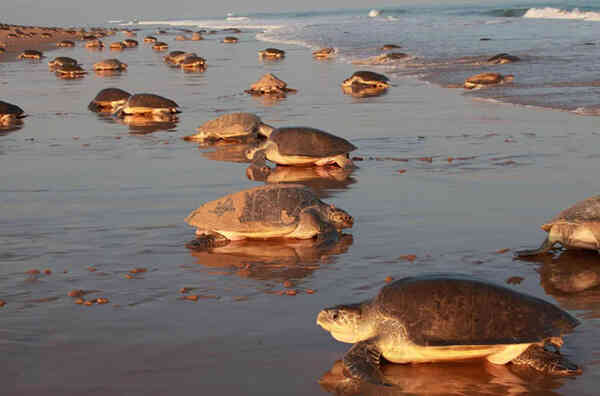
As the Pacific green turtles are accustomed to coming ashore to lay eggs in groups during the day, there may be more than a hundred of them at a time, which is quite spectacular. The ecological scenes of Pacific green turtles laying eggs can be seen on the coasts of India and Mexico around the world. In the Orissa Province of India, there have been shots of more than 10,000 Pacific green turtles laying eggs. It has also appeared on the beaches of Mexico.
Costa Rica's Ostionar National Wildlife Refuge is one of the two most important nesting sites for the Olive Ridley turtles in the world. During the nesting season every year, a large number of Olive Ridley turtles come to lay eggs. The largest number of collective nesting takes place from September to November, and each lasts for 3 to 5 days.
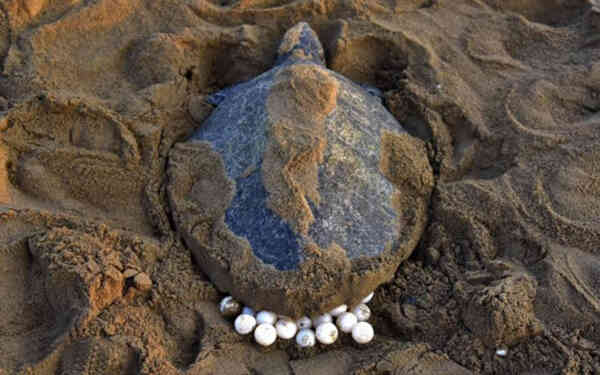
The production of the Pacific turtle in China is not large, and it is not caught in large quantities as an economic fishing target. However, it is often caught in fishing and shrimping. The Pacific turtles caught are often used for food, fish meal or for viewing. The Shanghai Natural History Museum has a collection of 9 Pacific turtle specimens from the East China Sea, which were caught from June to December, with the majority in August. The number is similar to that of leatherback turtles, which is much lower than the number of turtles caught from the East China Sea. No breeding grounds for the Pacific turtle have been found in China. With the improvement of sea turtle protection measures, the work of artificially collecting and hatching sea turtle eggs and releasing them back into the sea has begun in relevant countries and regions where sea turtles lay eggs.
Listed in China's "National Key Protected Wildlife List" (February 5, 2021) as the first level.

